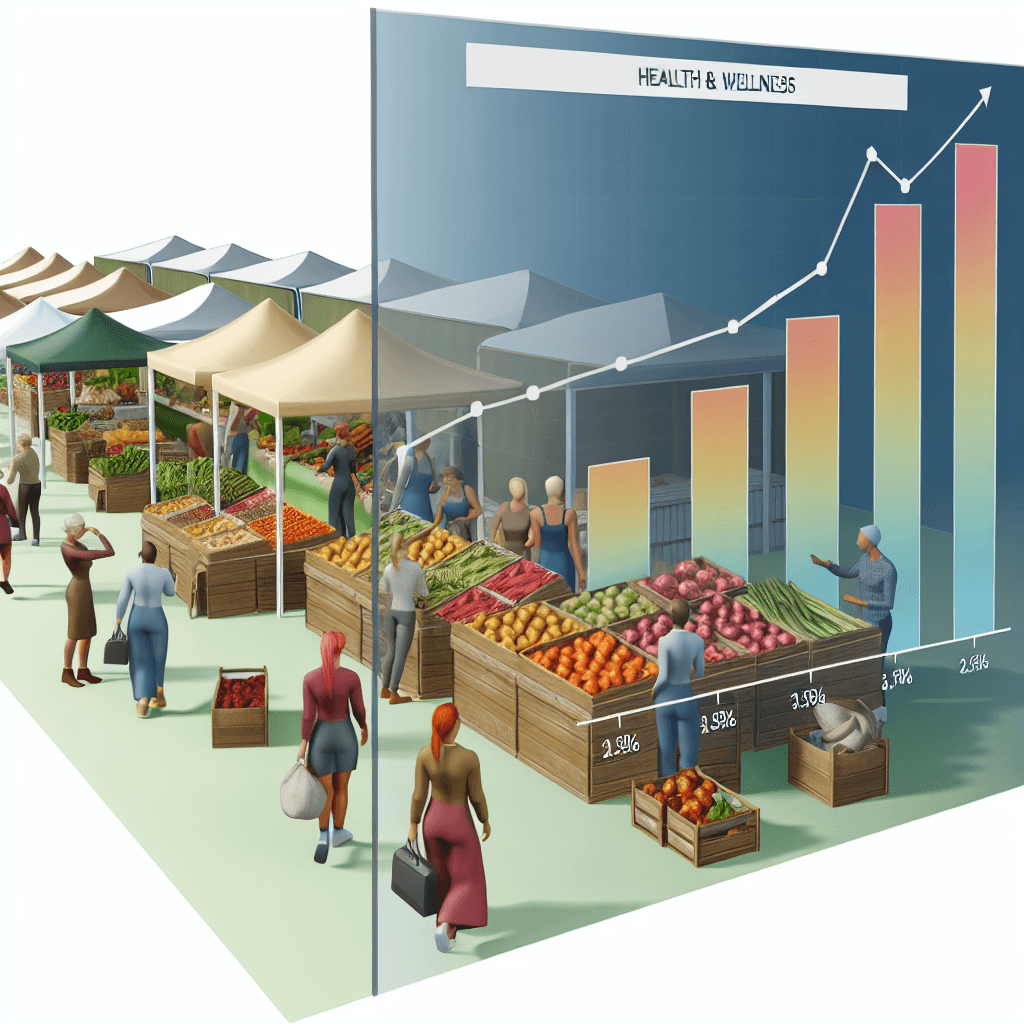Explore the Health and Wellness Food Market size, scope, trends, and forecasts for strategic insights.
Health And Wellness Food Market Size, Scope, Trends &Forecast

Table of Contents
- Health and Wellness Food Market Size, Scope, Trends & Forecast
- Understanding the Health and Wellness Food Market
- Market Size and Growth
- Key Trends Influencing the Market
- Regional Insights
- Impact of COVID-19 on the Market
- Case Studies
- 1. The Rise of Functional Beverages
- 2. Plant-Based Meat Alternatives
- Future Forecast
- Conclusion
Health and Wellness Food Market Size, Scope, Trends & Forecast

The health and wellness food market has been growing exponentially in recent years, driven by increasing consumer awareness about the benefits of a healthy diet and a growing societal focus on natural and organic ingredients. This article explores the size, scope, and trends of this burgeoning market, and provides a forecast for its future growth, underpinned by relevant examples, case studies, and statistics.
Understanding the Health and Wellness Food Market
The health and wellness food market encompasses a wide range of food products designed to have a beneficial effect on health. This includes everything from organic and natural foods to functional foods that are enhanced with added health benefits, and alternative dietary food products tailored for specific health conditions like diabetes or digestive health.
Market Size and Growth
The global health and wellness food market has witnessed significant growth over the past decade. According to a report by Grand View Research, the market was valued at approximately USD 733.1 billion in 2020 and is expected to grow at a compound annual growth rate (CAGR) of 6.4% from 2021 to 2028. This growth is primarily driven by the increasing consumer demand for nutritious and organically produced foods.
Key Trends Influencing the Market
- Organic and Natural Foods: There is a growing consumer preference for organic and natural foods, driven by concerns about health, the environment, and animal welfare.
- Functional Foods: These are foods enhanced with nutrients or substances that offer additional health benefits beyond basic nutrition. Examples include probiotic yogurt and omega-3 enriched eggs.
- Plant-based Diets: The rise in vegetarianism and veganism has spurred demand for plant-based foods, which are perceived as healthier and more sustainable than animal-based products.
- Transparency and Clean Labeling: Consumers are increasingly demanding transparency about the origins and contents of their food, leading to a surge in clean labeling practices.
Regional Insights
The health and wellness food market varies significantly by region, influenced by local dietary habits, health trends, and regulatory environments. North America and Europe are currently the largest markets, due to high consumer awareness and spending power. However, Asia-Pacific is expected to grow rapidly, driven by increasing health consciousness and changing lifestyles, particularly in countries like China and India.
Impact of COVID-19 on the Market
The COVID-19 pandemic has had a profound impact on the health and wellness food market. The crisis has heightened consumer focus on health and immunity, which in turn has increased the demand for health and wellness foods. For instance, products like ginger, turmeric, and foods rich in Vitamin C have seen a surge in demand due to their immunity-boosting properties.
Case Studies
1. The Rise of Functional Beverages
One notable trend is the rise of functional beverages. Brands like GT’s Living Foods, which produces kombucha, a fermented tea known for its health benefits, have seen significant growth. GT’s Living Foods reported a 52% increase in sales in 2020, highlighting the strong consumer interest in functional beverages.
2. Plant-Based Meat Alternatives
Companies like Beyond Meat and Impossible Foods have revolutionized the plant-based food market by offering meat alternatives that closely mimic the taste and texture of real meat. Beyond Meat’s revenue increased by 36.6% in 2020, demonstrating robust consumer demand for plant-based products.
Future Forecast
Looking ahead, the health and wellness food market is expected to continue its growth trajectory. Innovations in food technology, increasing consumer awareness of health issues, and the ongoing trend towards sustainable consumption are likely to drive market expansion. Furthermore, regulatory support for healthier food options could bolster market growth in various regions.
Conclusion
The health and wellness food market is at an exciting juncture, with significant opportunities for growth and innovation. As consumers increasingly prioritize health and sustainability, the market is set to expand further, offering ample opportunities for new and existing players. The trends of organic consumption, functional foods, and plant-based diets are not just passing fads but are becoming mainstream, reshaping the food industry at large. Companies that can innovate and align with these consumer preferences will likely lead the market in the coming years.
In conclusion, the health and wellness food market continues to evolve, driven by a complex interplay of consumer trends, technological advancements, and global health challenges. Stakeholders in the food industry must stay informed and agile to capitalize on the opportunities presented by this dynamic market.








